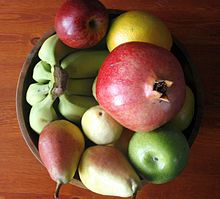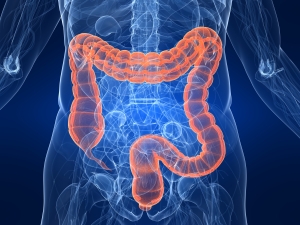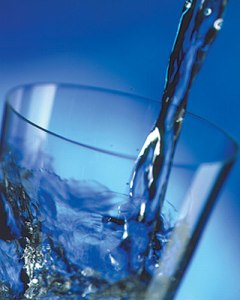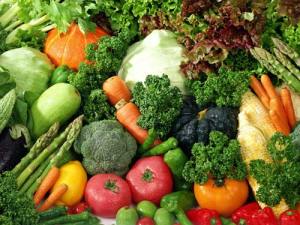The most common reason for people to visit us at the clinic is “I’ve been told I’ve got Irritable Bowel Syndrome”. First of all I reassure them we can explore their eating, thinking, feeling and lifestyle patterns and unfold a wonderful puzzle. Most people at some time of their existence will suffer from Irritable Bowel from mildly to dramatically. It can be a very debilitating experience. As we really love to have that spring in our step each day and often “Metamucil” doesn’t quite cut for most. So here we will discuss Fibre and the 2 types Soluble and Insoluble.
This is a great diagram of the outline of your colon…well the perfect colon, its approximately 1.5 metres long and I liken it to a 1.5 metre brown snake coiled inside you..An unhealthy colon can get twisted, looped, blocked and bulged, so its important to tune into the visual of this amazing organ inside your body.
What’s All This About Fibre?
One of the most troublesome pieces of advice routinely given to people with IBS is the dictate, ‘Eat more fibre!’ It prompts the question – what kind of fibre?
Most people are never even told that there are actually two types of fibre. The term ‘fibre’ in general refers to a wide variety of substances found in plants. Some of these substances can be dissolved in water (‘soluble fibre’), and others do not dissolve (‘insoluble fibre’). Insoluble fibre is ‘rough’; it passes intact through the intestinal tract, increasing the frequency, water content, and looseness of bowel movements. Insoluble fibre, and particularly wheat bran, decreases the transit time of fecal matter in the G.I. tract. Although this has the crucial benefit of reducing the colon’s exposure to carcinogens, thus inhibiting colon cancer development, it can also trigger painful attacks in IBS sufferers, with severe cramping that can result in diarrhea or constipation. Many people also suffer gluten intolerance, so wheat, bran,oats and rye are out. Personally I’m not a great fan of a high grain diet. Balance is the key and grains like millet, spelt, quinoa, amaranth and rice are a much better option in limited quantities. I like the idea of fibre with water in as in vegetables, but with IBS its best to steam and peel some of them as the skins can irritate the colon.
Soluble fibre, in contrast, is ‘smooth’, and soothing to the digestive tract. It regulates the digestive tract, stabilizes the intestinal contractions resulting from the gastrocolic reflex triggered by eating, and normalizes bowel function from either extreme. That’s right – soluble fiber prevents and relieves both diarrhea and constipation. Nothing else in the world will do this for you. How is this possible? The ‘soluble’ in soluble fibre means that it dissolves in water (though it is not digested). This allows it to absorb excess liquid in the colon, preventing diarrhea by forming a thick gel and adding a great deal of bulk as it passes intact through the gut. This gel (as opposed to a watery liquid) also keeps the GI muscles stretched gently around a full colon, giving those muscles something to easily ‘grip’ during peristaltic contractions, thus preventing the rapid transit time and explosive bowel movements of diarrhea as well. By the same token, the full gel-filled colon (as opposed to a colon tightly clenched around dry, hard, impacted stools) provides the same ‘grip’ during the muscle waves of constipation sufferers, allowing for an easier and faster transit time, and the passage of the thick wet gel also effectively relieves constipation by softening and pushing through impacted fecal matter. If you can mentally picture your colon as a tube that is squeezing through matter via regular waves of contractions, it’s easy to see how a colon filled with soluble fibre gel is beneficial for both sides of the IBS coin.
THE BIG FACTOR FOR ALL FIBRE ESPECIALLY SOLUBLE FIBRE IS TO DRINK AT LEAST 2 LITRES OF WATER THROUGHOUT THE DAY.
As a bonus here, normalizing the contractions of the colon (from too fast or too slow speeds) prevents uncomfortable and irregular spasms that result in the lower abdominal cramping pain that cripples so many IBS patients. This single action alone is a reason not to eat anything on an empty stomach but soluble fiber. Ever. The only foods you want to trigger your gastrocolic reflex are soluble fiber, as that’s the only way you can keep those contractions (and thus life) normal.
Soluble fibre also lowers LDL (‘bad’) blood cholesterol levels and the resultant risk of heart disease, helps prevent colon cancer, and improves glycemic control in diabetics by slowing the digestion of carbohydrates and the subsequent release of glucose into the blood. In addition, soluble fiber may help prevent blood vessel constriction and the formation of free radicals (both risk factors for heart attacks) by slowing the absorption of fat and carbohydrates into the bloodstream.
Metamucil, made from psyllium husks, and Citrucel, made of methylcellulose, are both soluble fibre, and can be extremely helpful when taken daily (make sure they are NOT the sugar-free varieties, which have artificial sweeteners in them, and can trigger attacks). I personally prefer AIM HERBAL FIBREBLEND, this product has a wonderful synergy of herbs in it and is available from my website http://www.backtobalancecolonics.com The psyllium is a fine dust of psyllium and is usually tolerated even by people who can’t usually tolerate it.
Please be aware that although both of these products are marketed as laxatives, they actually help treat and prevent diarrhea as well as constipation. Soluble fiber alone has this remarkable ability to normalize colonic activity from either extreme.
Foods that are naturally high in soluble fibre include oatmeal, pasta, rice, potatoes, sourdough bread, soy, barley, millet, and oat bran. These starchy foods are also high in complex carbohydrates, which are an important source of readily accessible fuel for energy. Remember to eat say a very small portion at each meal. Nuts, beans, and lentils are also good sources of soluble fiber but should be treated with care, as nuts are high in fat and both lentils and beans contain some insoluble fibre. Some people with IBS myself included can rarely tolerate beans and legumes. So introduce or pay attention to how you feel if you eat these foods…The trick is very small quantities.
Soluble fibre should ALWAYS be the first thing you eat on an empty stomach, and it should form the basis of EVERY snack and meal. Your goal is to keep your colon consistently stabilized by providing it with a regular supply of soluble fibre. For example breakfast could be a smoothie with banana, rice milk, cinnamon, and some lsa mix.
Insoluble Fibre – How Can Healthy Foods Hurt You?
Insoluble fibre, although crucial for good health, can be a powerful IBS trigger. It needs to be incorporated into your diet in the largest quantities possible, but with great care. Insoluble fibre should NEVER be eaten alone or on an empty stomach for those suffering IBS.
Remember that it is much better to have a wide variety of insoluble fiber foods in small amounts than to not eat any at all. You are also likely to find that your tolerance for insoluble fiber will increase if you are consistently eating it, even in tiny portions. However, it’s important to note that individual tolerances vary. The following list is comprehensive and should include all potential insoluble fiber sources of trouble for a hyperactive colon; you may have a degree of tolerance for some of these foods and absolutely none for others. IBS is a highly personalized problem, so you will need to learn your own food tolerances and work around them.
Raw fruits, raw vegetables, raw greens, raw sprouts, and seeds (including those from fresh fruits or vegetables), are all very high in insoluble fibre. Be particularly careful with fruits and vegetables that have tough skins or hulls such as blueberries, cherries, apples, grapes, peas, corn, capsicum, celery, etc. It helps tremendously to peel and cook these fruits and vegetables until tender, as this makes their fiber content dramatically less likely to trigger attacks. It is also a healthy habit to routinely incorporate fruits and veggies as secondary ingredients in recipes with soluble fibre foods as the main ingredients. If possible, buy organic produce only, as the chemical pesticides and herbicides used on fruits and vegetables can have adverse health effects. If you can’t do this wash and or peel the veges.
Two categories of fruits and vegetables, those that are acidic and sulfur-containing, require extra precautions. Citrus juice and cooked tomatoes have very high acidity levels, which can cause GI distress, so they must be eaten with care. Incorporate them into meals (or drinks served with meals) with a high soluble fibre content, and don’t eat them on an empty stomach. They must not be eliminated from your diet altogether, however, as they contain crucial vitamins and anti-oxidants. Tomatoes are also very high in lycopene, which prevents some forms of cancer.
Garlic, onions, leeks, broccoli, cauliflower, cabbage, and Brussels sprouts, though among the most nutrient-packed of all vegetables, can also pose problems. In addition to their high amounts of insoluble fibre, all contain sulfur compounds, which produces gas in the GI tract and can thus trigger attacks. As with other vegetables, cook these until tender, combine them with soluble fibre, and don’t eat them when your stomach is completely empty – but do make sure and eat them.
To incorporate raw fruits and veggies into your diet, peel and eat them in small quantities (just two or three bites) finely chopped, as additions to high soluble fibre foods such as sourdoughs, gluten free pastas, rice, etc. It should also help to eat them towards the end of a meal. This is especially important when it comes to green salads. Eating a salad, on an empty stomach at the beginning of lunch or dinner, is likely to trigger an attack. Eating them at the end of a high soluble fibre meal is typically quite safe. For fruit salads follow the same guidelines.
Whole nuts are not only high in insoluble fibre, they are also high in fat. Although this fat is monounsaturated and lowers your risk of heart disease, it is still an IBS trigger. Like other high insoluble foods, nuts are crucial for good health, but must be eaten carefully. Finely grinding nuts and incorporating them into recipes with soluble fibre is a very safe way to eat them. Small amounts of nut butters on toasted sourdough bread are usually very tolerable as well. Experiment with the nut butters, could be too fatty, once a day is sufficient.
Fresh fruit juices, especially apple, prune, and grape, are sky high in fructose, which can trigger cramps and diarrhea. Fruit juices in general should be avoided on an empty stomach. Cranberry juice is usually a safe choice. Rhubarb, prunes, figs, licorice are all natural laxatives. As with fresh fruits in general, you may be able to safely incorporate these foods into recipes with soluble fibre. Can be a good idea to peel the apple or pear or try blending in a smoothie to make it more easily digestible.

STRESS
I suggest playing around with different foods to see what triggers your IBS, STRESS is often the number ONE reason for IBS…when our energy is going to stress there is none left for digestion. With stress we often EAT OUR FEELINGS..instead of FEELING OUR FEELINGS, so I suggest to take 5 to 1o mins at least twice a day to just stop and breathe quietly in quiet place to allow your body to relax and unwind before making not so great choices in what and how much you eat….I will discuss emotional eating in depth at another time…
Happy healthy eating , Tanya “the poo fairy”


